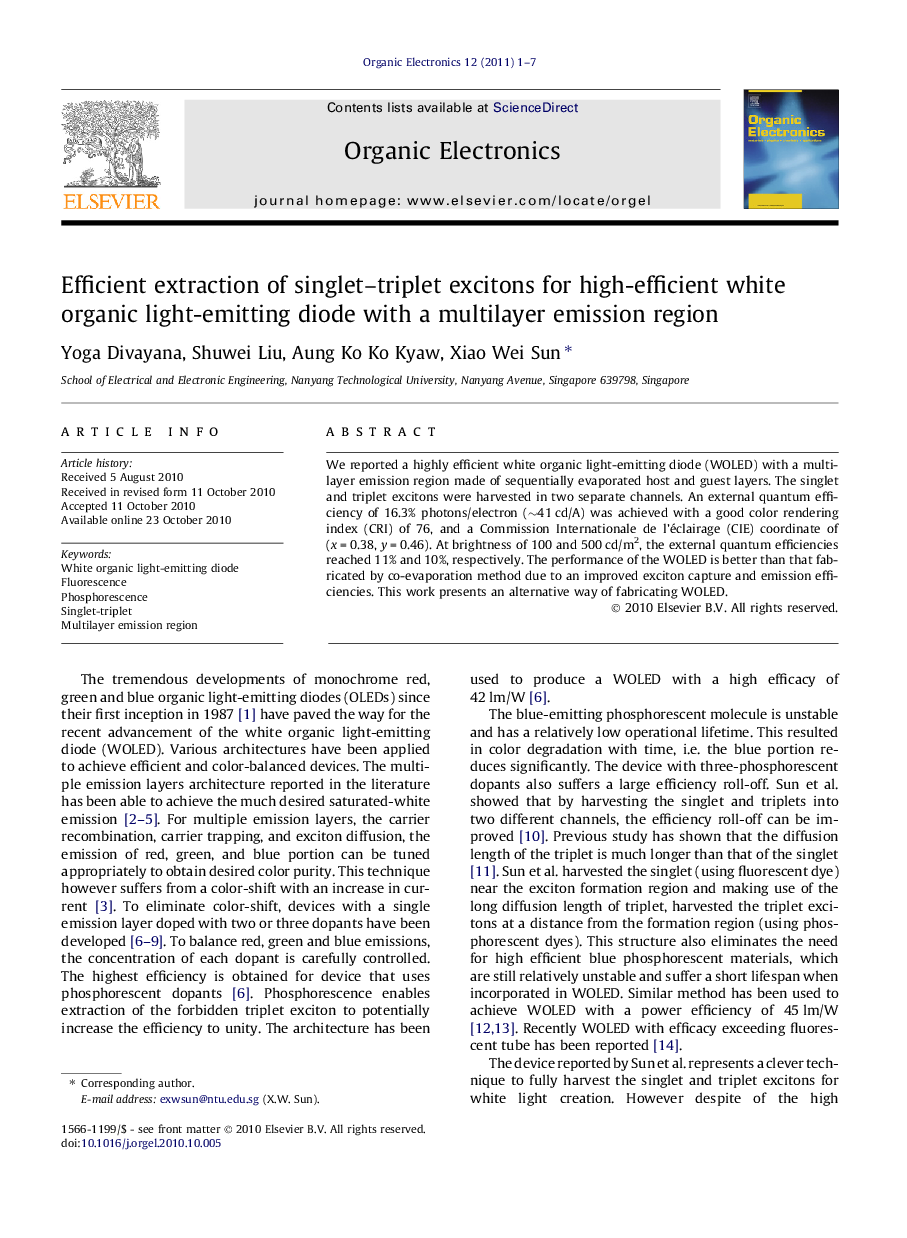| Article ID | Journal | Published Year | Pages | File Type |
|---|---|---|---|---|
| 1267717 | Organic Electronics | 2011 | 7 Pages |
We reported a highly efficient white organic light-emitting diode (WOLED) with a multilayer emission region made of sequentially evaporated host and guest layers. The singlet and triplet excitons were harvested in two separate channels. An external quantum efficiency of 16.3% photons/electron (∼41 cd/A) was achieved with a good color rendering index (CRI) of 76, and a Commission Internationale de l’éclairage (CIE) coordinate of (x = 0.38, y = 0.46). At brightness of 100 and 500 cd/m2, the external quantum efficiencies reached 11% and 10%, respectively. The performance of the WOLED is better than that fabricated by co-evaporation method due to an improved exciton capture and emission efficiencies. This work presents an alternative way of fabricating WOLED.
Graphical abstractFigure optionsDownload full-size imageDownload as PowerPoint slideResearch highlights► Here we reported an alternative way of fabricating a white organic light-emitting diode (WOLED, which is the most complex OLED yet) that eliminates the need for co-evaporation of guest and host materials (doping). ► The emission region consists of sequentially evaporated pure host and guest layers. ► The external quantum efficiency (EQE) at low current density is higher than that reported by co-evaporation method. ► The EQE reaches 16.3% (41 cd/A) at a current density of 0.05 mA/cm2. ► At brightness of 100 and 500 cd/m2 the EQE drops slightly to 11% and 10%, respectively, but still comparable with that fabricated by co-evaporation method.
